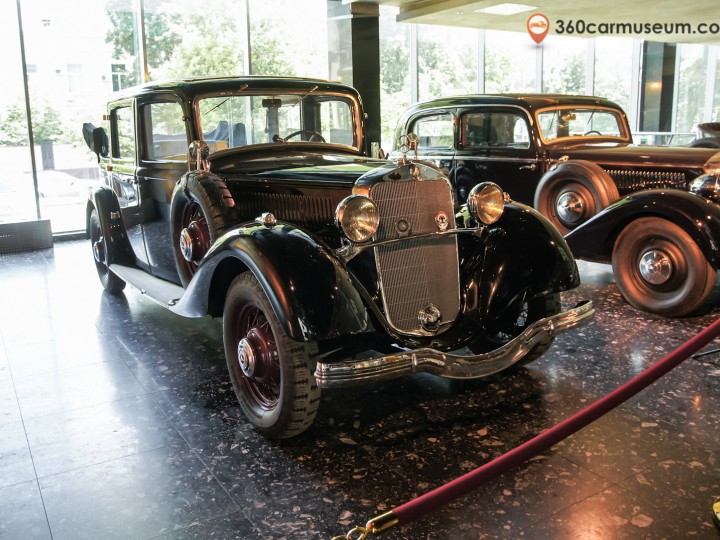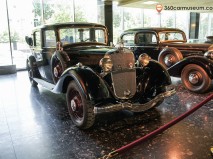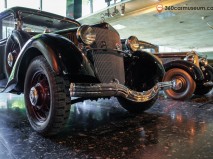1935 Mercedes-Benz 200 (W21) Pullman-Laundaulet
The car was a development upmarket from the manufacturer’s W15, itself introduced two years earlier. The W21 replaced the Mercedes-Benz W02 (in its own day known as the Mercedes-Benz Typ(e) 200 “Stuttgart”) which the company had been manufacturing since 1928. The car was available as a two- or four-door Torpedo bodied “Tourenwagen”, a four- and (from 1935) two-door “Limousine” (sedan/saloon), a three- or four-seater Cabriolets or as a sporting two-seater.
In 1934 a lengthened version of the car was introduced, its wheel base increased by 350 mm (14 in) to 3,050 mm (120 in). Models offered on the longer wheelbase included a six-seater “Pullman-Limousine”, a “Pullman-Laundaulet”, a longer Torpedo bodied “Tourenwagen”, a more streamlined 4-door “Limousine” (sedan/saloon) and three different longer wheel base Cabriolets listed respectively as the “Cabriolet A”, the “Cabriolet B” and the “Cabriolet D”.
The side-valve six-cylinder engine had a capacity of 1,961 cc which produced a claimed maximum output of 40 PS (29 kW; 39 hp) at 3,200 rpm. The engine shared its 85 mm (3.3 in) piston stroke length with the smaller 6-cylinder unit fitted in the manufacturer’s W15 model, but for the W21 the bore was increased by 5 mm (0.20 in) to 70 mm (2.8 in). The stated top speed was 98 km/h (61 mph) for the standard length and 95 km/h (59 mph) for the long bodied cars. Power passed to the rear wheels through a four-speed manual transmission in which the top gear was effectively an overdrive ratio. The top two ratios featured synchromesh. The brakes operated on all four wheels via a hydraulic linkage.









